

You can download X-volver and a collection of filter matrices here. X-volver is free for personal usage. Contact the author for professional usage.
X-volver can be hosted inside a large number of sound processing programs, but for multichannel operation (that is, more than 2 inputs, 2 outputs) you need to employ a truly-multichannel host program. Unfortunately most sound processing programs and DAWs support only soundtracks with a limited number of audio channels (typically 2, 4 or 6 at most). Instead X-volver can operate with up to 32 channels (and the shortcoming version will go up to 64), so your host program is better if capable of such large channel counts.
Furthermore, Xvolver can produce an output stream having a different channel number than the input stream, and only a few audio processing programs allow for this possibility.
We recommend the usage of "graphical" sound processing programs, such as Plogue Bidule, Audio Mulch, PureData, Max-Msp. X-volver can also be employed inside traditional DAW programs, such as Reaper, but this makes quite more difficult to understand the signal paths.
This is a typical screenshot of Plogue Bidule, where an instance of X-volver is employed for processing a 4-channels audio file and converting it to another 4-channels audio file, employing a filter matrix of 4x4 (16) FIR filters:
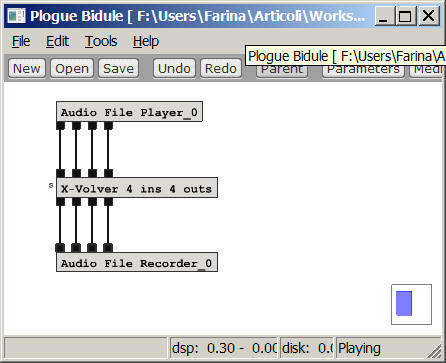
When X-volver is first instanced, under Windows, it asks for the number of input and output channels:

This does not happens on the Mac version, where the number of channels must be changed inside X-volver, then it must be closed and opened again for the new setting to become effective.
After instancing X-volver and connecting its 4 inputs (from above) and its 4 outputs (to below), you can click on it for opening its user's interface:
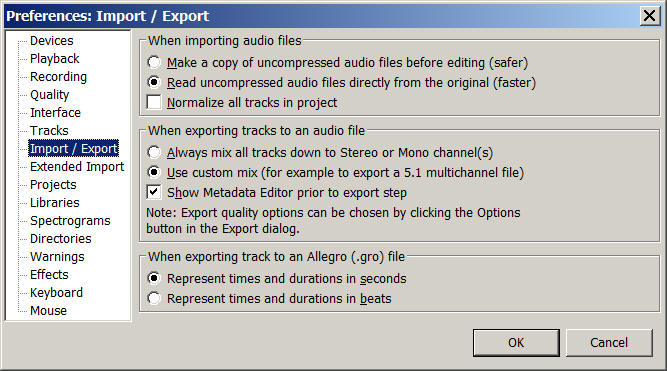
The largest part of the GUI contains the filter matrix, in this case a 4x4 matrix, where the impulse responses (IRs, also called FIRs) of the filters have to be loaded.
This matrix contains 16 cells, numbered from (1,1) to (4,4). You must remember that COLUMNS=INPUTS, ROWS=OUTPUTS.
So the signal coming out from X-volver on channel 1 will be the sum of the convolutions of the 4 inputs with the 4 filters displayed in the first row:
Out(1) = In(1)*f(1,1) + In(2)*f(1,2) + In(3)*f(1,3) + In(4)*f(1,4).
For populating the matrix of FIR filters you have three ways:
1) If Mode is set to "IR mono", first write in the IR size field the proper length (in samples) of the impulse responses you plan to use (16384, in the example below). Then navigate to a directory containing the individual filters (each saved in a mono WAV file) by pressing the button labelled [...], and then drag-and-drop these filters to each cell of the matrix, as shown here during the drag-and-drop operation:
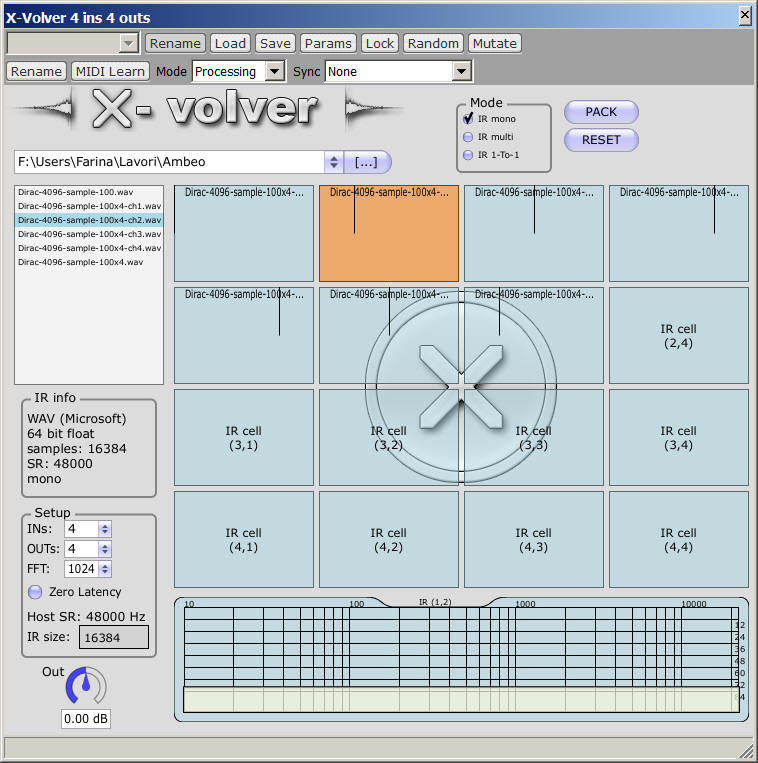
When the matrix is complete, you can save it in a single multichannel WAV file pressing the PACK button:
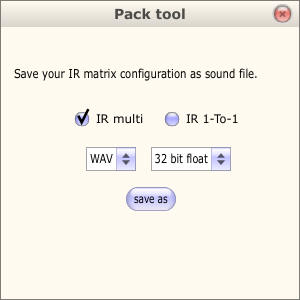
It is recommended to always save in 32 bit float format, "IR multi" (which means complete matrix, whilst "IR 1-TO-1" means to save only the diagonal of the matrix).
2) If a filter matrix is already available, packed in a single multichannel WAV file, you can select the Mode labelled "IR multi" in X-volver. At this point on the left you only see the WAV files having the "correct" number of channels (4, in this case), and you can just select the one to load. No drag-and-drop is required when in IR-multi mode, just selecting the WAV file automatically loads the full matrix, as shown here:
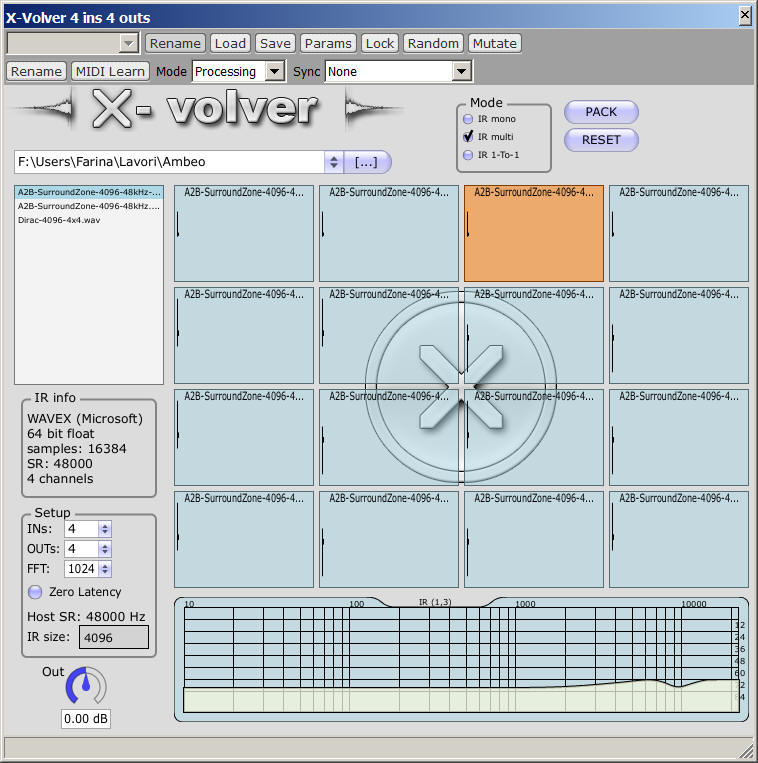
3) Finally, if Mode is set to "IR 1-to-1", only the diagonal of the filter matrix is processed (which means that each output is equal to the corresponding input, convolved with its FIR filter placed in the cell in the diagonal):
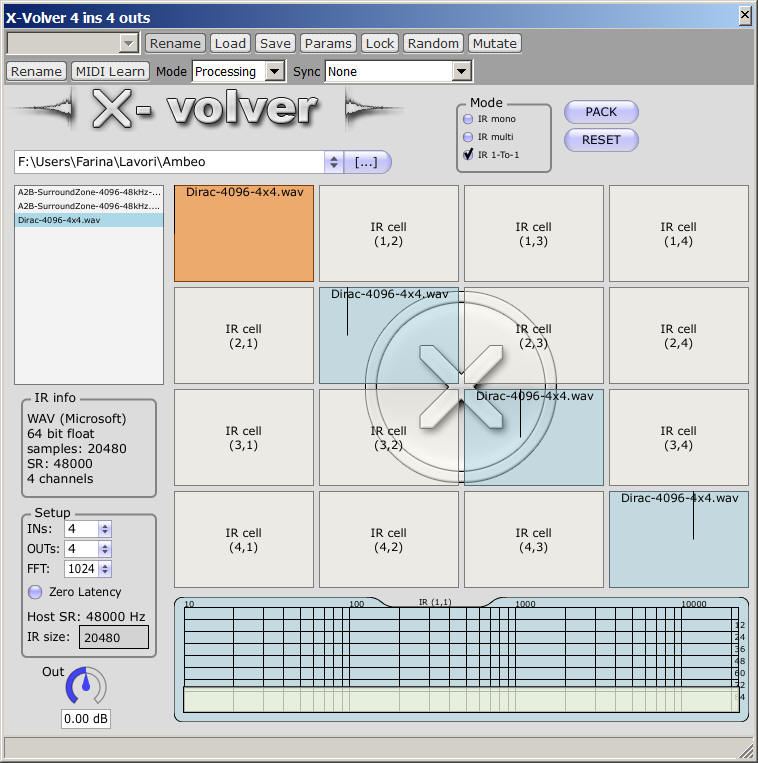
When operating in this mode, X-volver behaves as several other convolvers already widely employed, such as Voxengo Pristine Space. Matrix mode is peculiar to X-volver.
Of course you can create your own FIR filter matrix assembling the individual FIRs directy in a program such as Audacity. Remember to set, in the preferences of Audacity, the option "Use custom mix" for exporting a true multichannel file; by default, Audacity downmixes everything to stereo or mono...

Here you see for example the filter matrix employed above when it was being edited in Audacity:
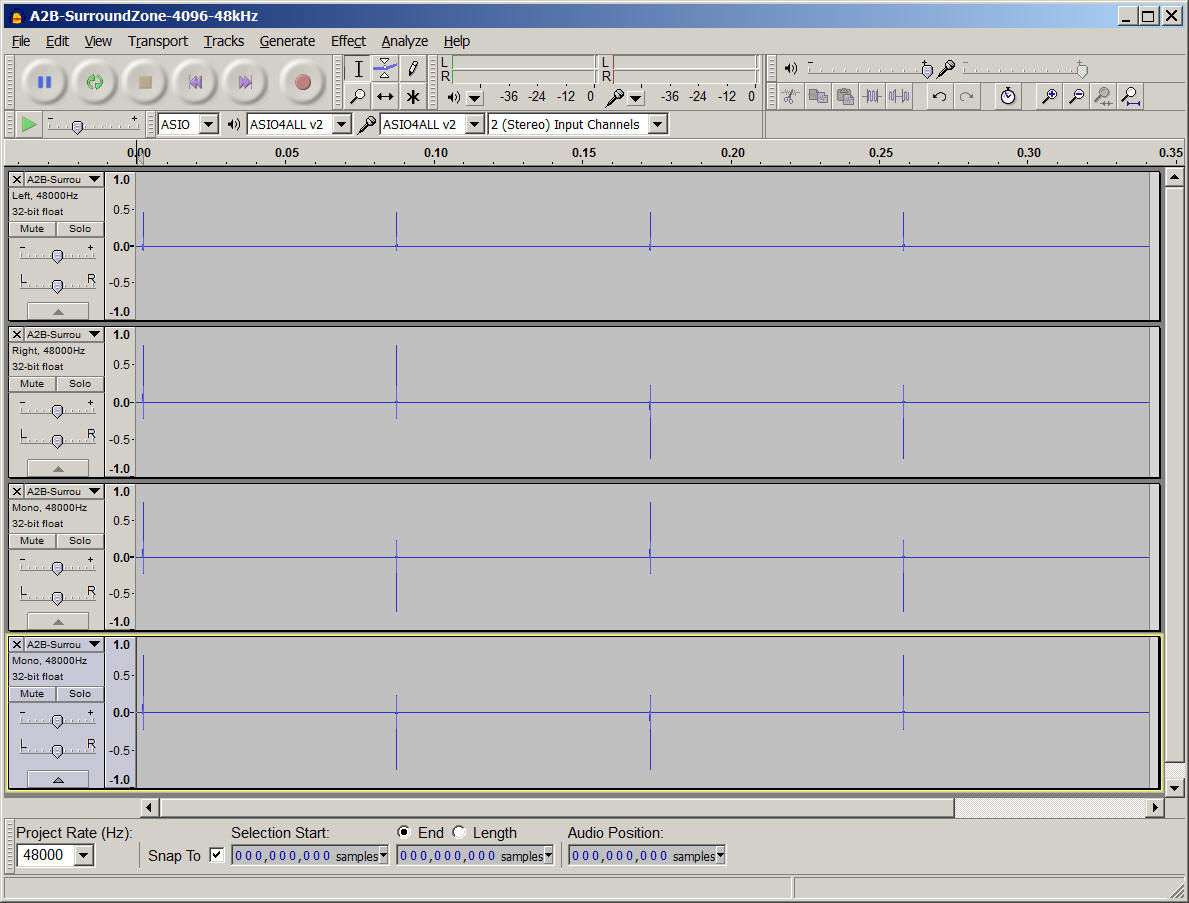
Just remember that in Audacity you have to specify "XvMulti" in the Comments, if you want that your filter matrix is recognized properly by the MAC-OSX version of X-volver (the Windows version does not require this):
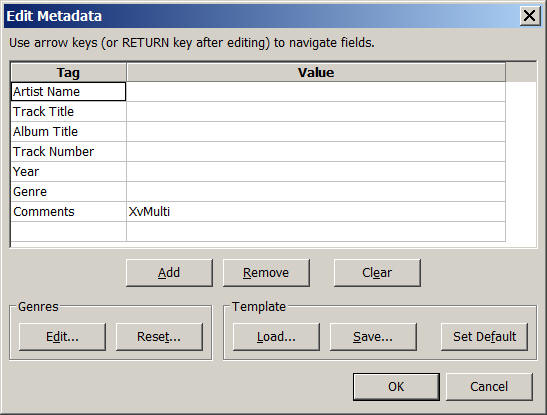
Final trick: set the processing gain properly, as often the convolution operation can result in a significant boost in the amplitude of the signals, which can clip and get distorted. No auto-gain is provided, so it is up to the user to ensure that the audio signal is not clipped, by adjusting properly the Out gain control.
Notes:
1) The graphical display of the waveform of each filter undersamples the real waveform, so do not expect to see all the peaks and valleys
2) The graphical display of the spectrum of the selected FIR filter is also low-resolution, so again do not expect to see all the peaks and valleys
3) The choice of IR size and the "Zero Latency" option affect the CPU usage and the processing latency. On modern computers you can operate massive convolutions, with small CPU usage and reasonably low latency, but if you exceed in your requirements the audio will drop or you will get other nasty artifacts.
And here you see an example of using X-volver for performing conversion between A-format and B-format.
All the contents are Copyright by Angelo Farina, 2017